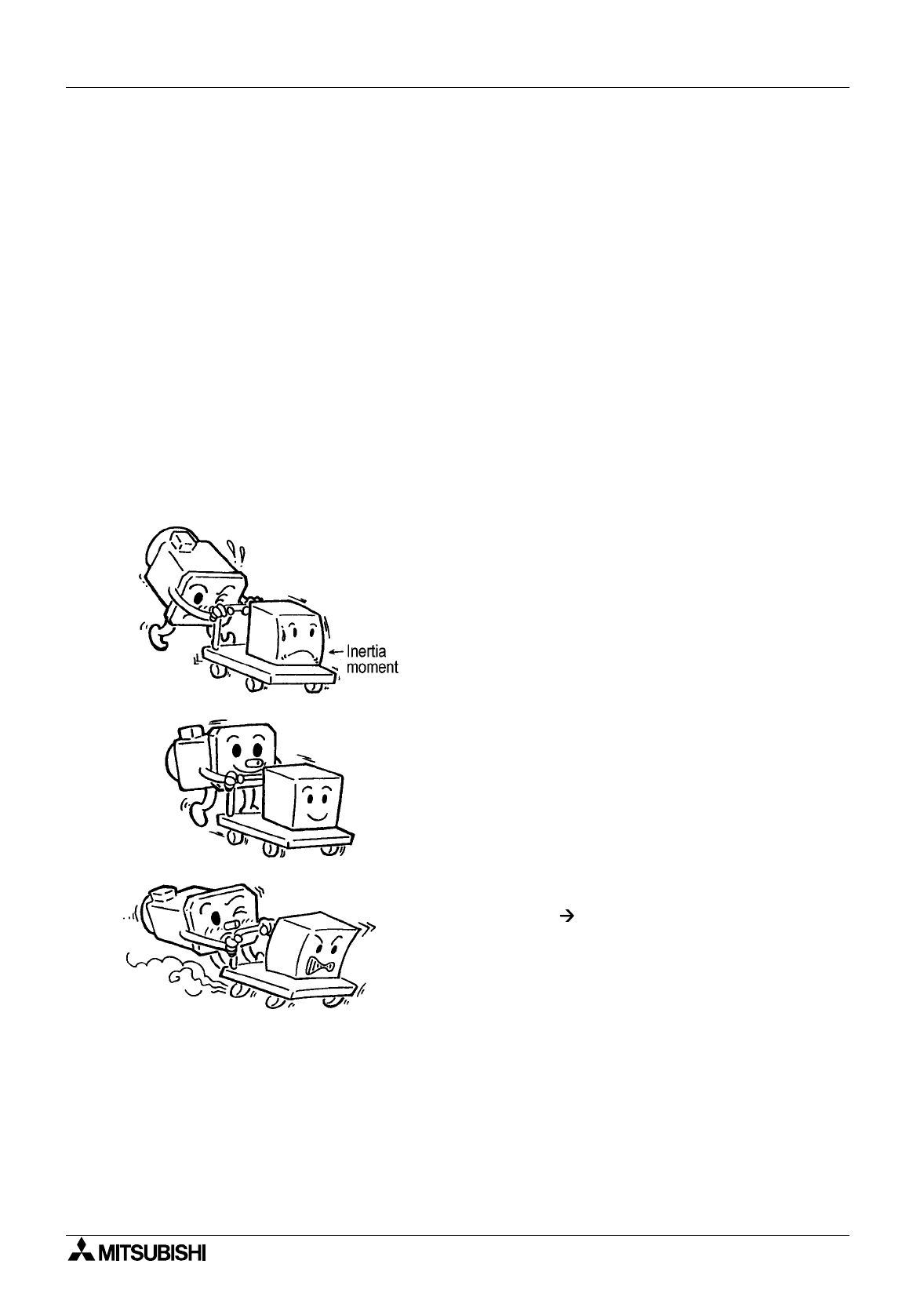
Positioning Control
A-4
5) Machine load torque (TL)
The rotation force required to move or cut an object is called load torque.
During operation at constant speed, the motor is outputting the torque balancing this load
torque.
• The calculation equation to obtain the load torque varies depending on the motion type
(horizontal, rotation or vertical).
• In the case of rotation, the load torque is calculated based on the product of the rolling
resistance coefficient of the bearing (ball bearing, for example) and the load applied in the
radius direction of the bearing.
A-1-2: Load inertia moment
Difficulty to move a stationary object or difficulty to stop a moving object is called inertia
moment. As the inertia moment is larger, the load is more difficult to move and stop. In the
servo motor, the inertia moment gives considerable effect especially at the time of start and
stop.
Accordingly, calculate the load inertia moment, then select a servo motor so that the obtained
load inertia moment does not exceed 10 times of the inertia moment of the servo motor itself.
Start
The motor starts to move an object while overcoming the
inertia moment.
Operation at constant speed
The inertia moment gives no effect.
Stop (deceleration stop)
The motor stops an object while overcoming the inertia
moment.


















